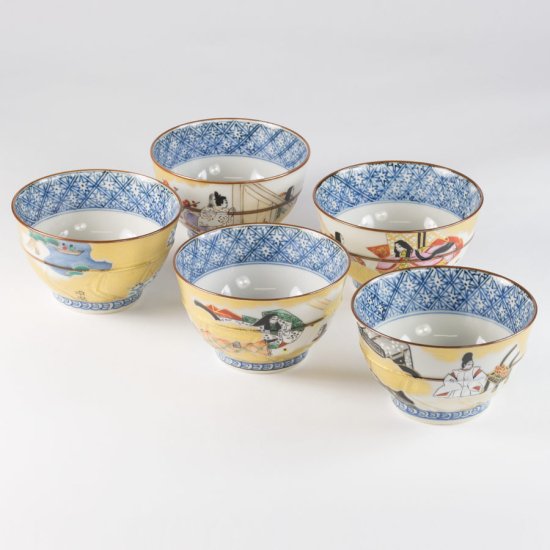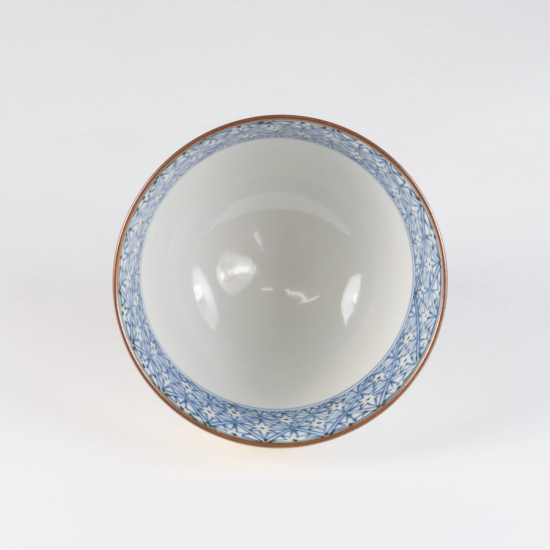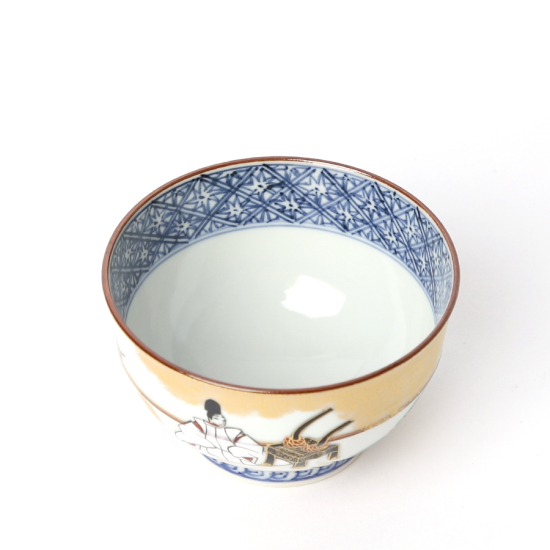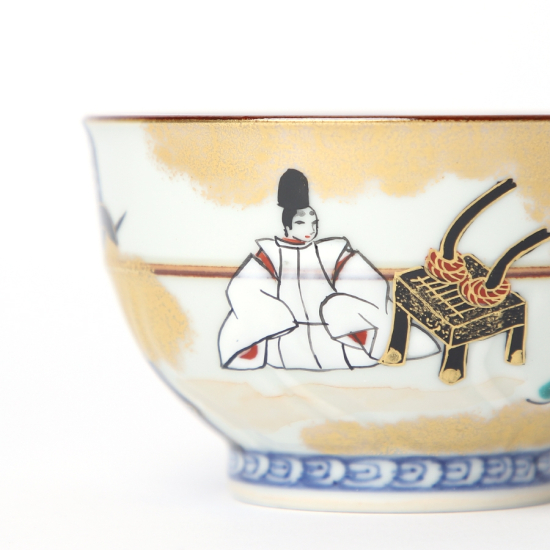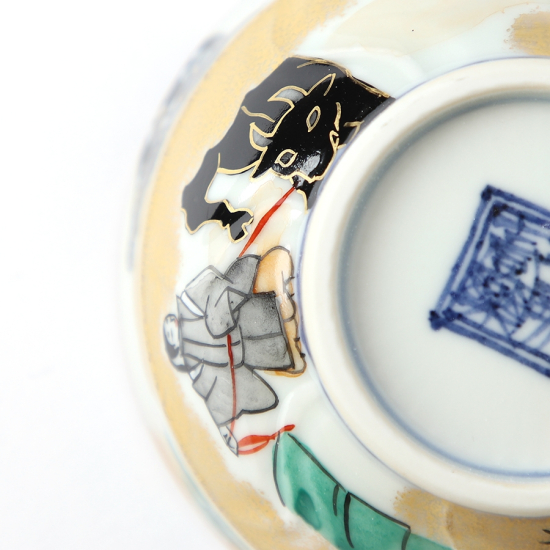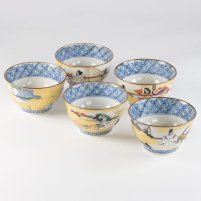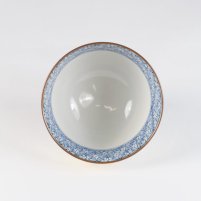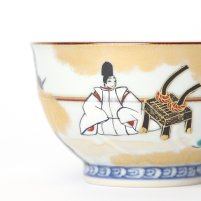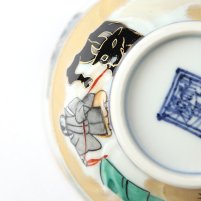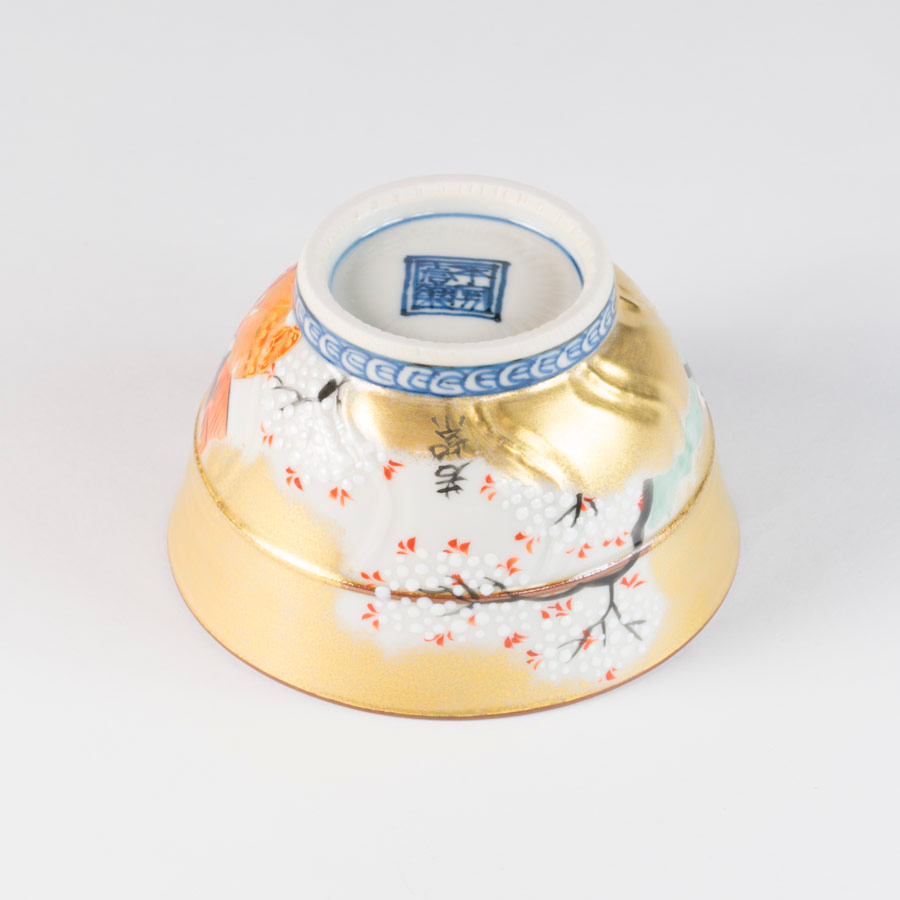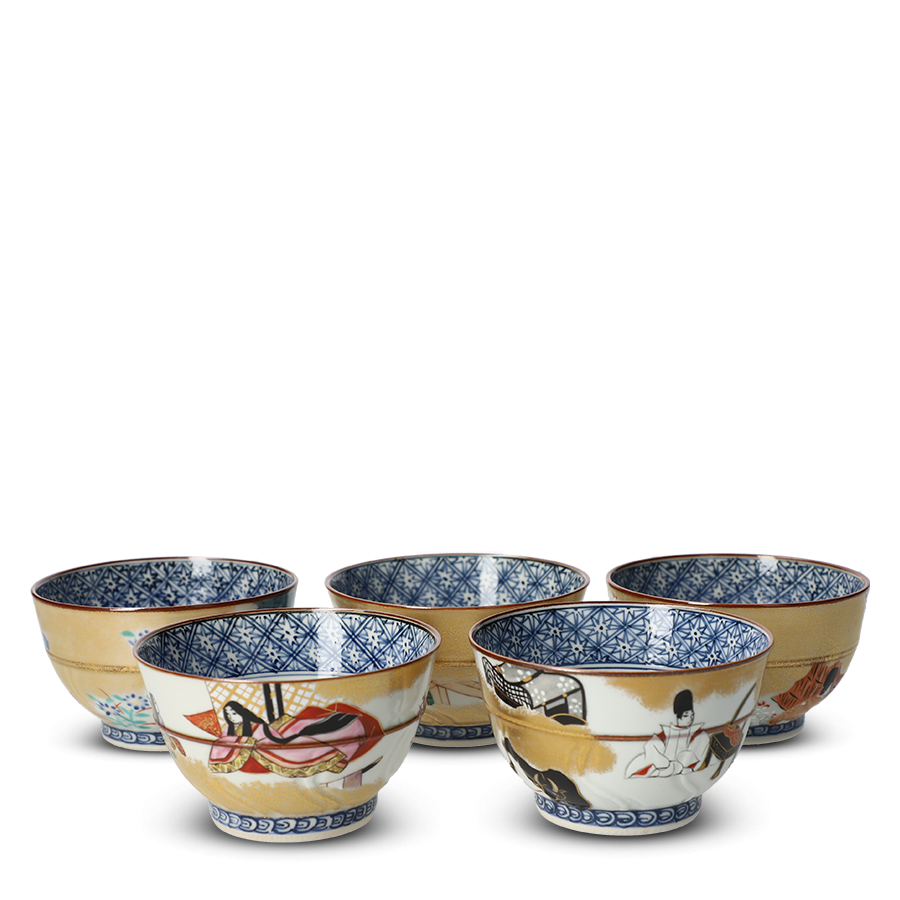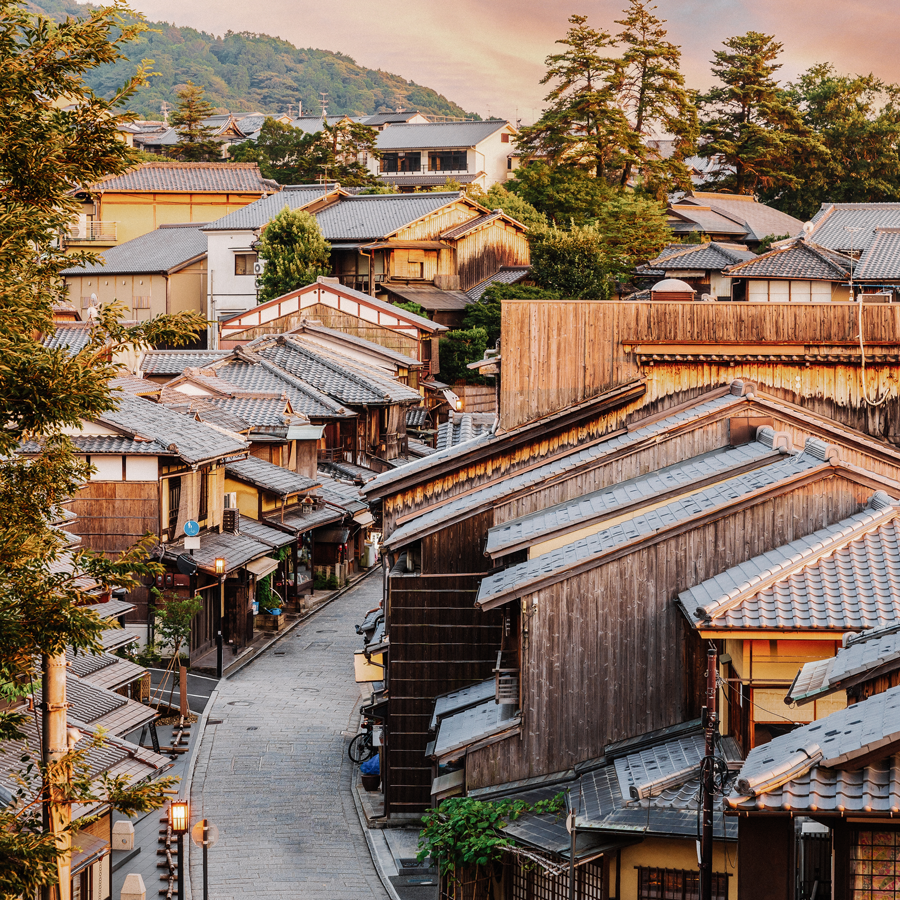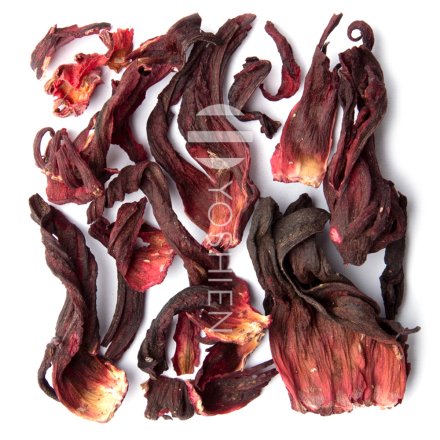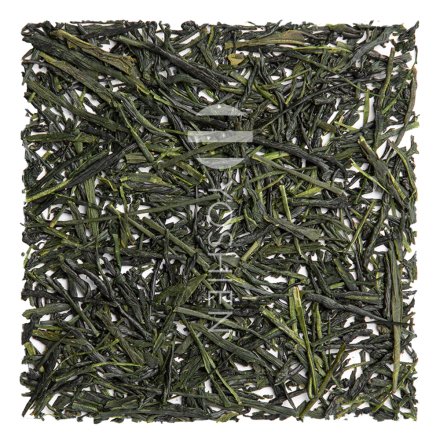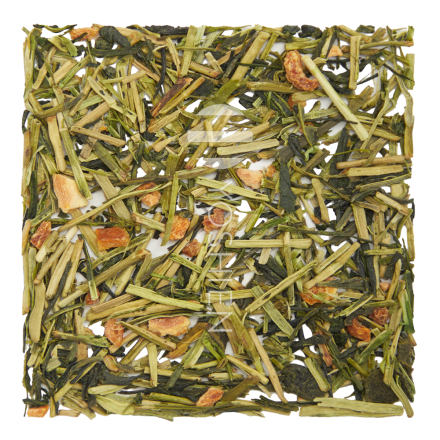Hand wash with warm water and a soft cloth or sponge – avoiding excessive rubbing. Use a mild washing-up liquid as necessary. After draining, pat dry with a towel or leave to dry naturally. Do not put in dishwasher, dryer or microwave as this may damage the glaze.
Teacup Set of 5
Genji Monogatari
Ichiraku
SKU
1613
A stunning set of five porcelain Kumidashi teacups decorated with scenes from the foremost work of Japanese literature: Genji Monogatari (源氏物語). Handmade at the Ichiraku Kiln in Kyoto, renowned for their exemplary Kiyomizu-yaki ceramics. Comes protected in a traditional Japanese wooden box, perfect for Senchadō ceremonies or as a gift.
| Product | 5-piece Teacup Set |
| Ceramic Style | Kyo-/Kiyomizu-yaki |
| Origin | Kyoto, Japan |
| Studio | Ichiraku-gama 壹楽窯 |
| Volume | 150ml |
| Dimensions | Ø8.5cm x 6cm |
| Material | Porcelain |
| Decoration | Handpainted illustrations, gold |
| Artist's mark | Signature on base |
| Packaging | Wooden box (Kiribako) |
Each item is handmade and unique, therefore sizing is approximate and paintings may differ slightly from the product photos
In stock



